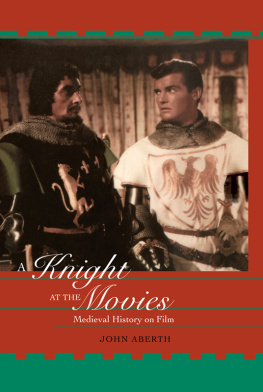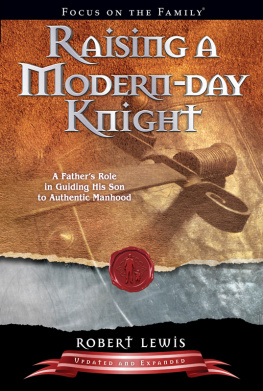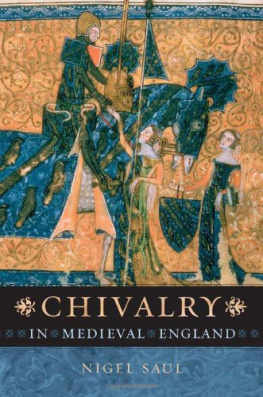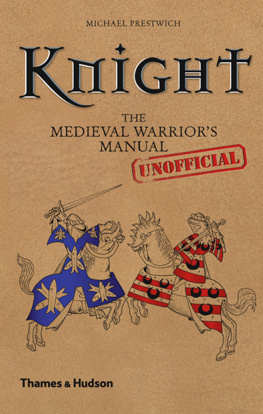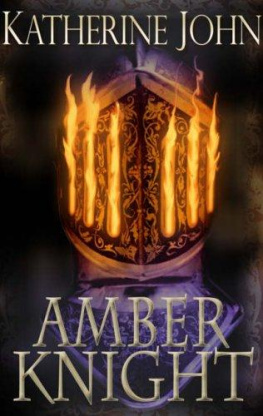
OSPREY PUBLISHING
Bloomsbury Publishing Plc
Kemp House, Chawley Park, Cumnor Hill, Oxford OX2 9PH, UK
1385 Broadway, 5th Floor, New York, NY 10018, USA
E-mail:
www.ospreypublishing.com
This electronic edition published in 2020 by Bloomsbury Publishing Plc
OSPREY is a trademark of Osprey Publishing Ltd
First published in Great Britain in 2020
Osprey Publishing Ltd, 2020
Chris Gravett has asserted his right under the Copyright, Designs and Patents Act, 1988, to be identified as Author of this work.
Previously published as Warrior 35: English Medieval Knight 14001500, Warrior 48: English Medieval Knight 12001300, and Warrior 58: English Medieval Knight 13001400. Artwork by Graham Turner Osprey Publishing Ltd.
All rights reserved
You may not copy, distribute, transmit, reproduce or otherwise make available this publication (or any part of it) in any form, or by any means (including without limitation electronic, digital, optical, mechanical, photocopying, printing, recording or otherwise), without the prior written permission of the publisher. Any person who does any unauthorised act in relation to this publication may be liable to criminal prosecution and civil claims for damages.
A catalogue record for this book is available from the British Library.
ISBN: 978-1-4728-4356-2 (HB)
ISBN: 978-1-4728-4358-6 (eBook)
ISBN: 978-1-4728-4359-3 (ePDF)
ISBN: 978-1-4728-4360-9 (XML)
Front cover and title page: A helmet made in Augsburg in 149092 for emperor Maximilian I. By the late fifteenth century, the armourers metal-working skill had reached its zenith, and German and Italian armours were prized by the wealthiest English knights. (DeAgostini/Getty Images)
Text compiled by Chris McNab.
Osprey Publishing supports the Woodland Trust, the UKs leading woodland conservation charity.
To find out more about our authors and books visit www.ospreypublishing.com. Here you will find our full range of publications, as well as exclusive online content, details of forthcoming events and the option to sign up for our newsletters. You can also sign up for Osprey membership, which entitles you to a discount on purchases made through the Osprey site and access to our extensive online image archive.
CONTENTS
CHRONOLOGY

The impression in wax of the early 13th-century seal of Robert FitzWalter, showing what appears to be a padded testier on the horses head and neck. (Granger, NYC/TopFoto)
MEDIEVAL MONARCHS, 11991500
| 1199 | Death of Richard I. Accession of John. |
| 1216 | Death of John. Minority of Henry III. |
| 1227 | Henry III assumes reins of government. |
| 1272 | Death of Henry III. Accession of Edward I. |
| 1307 | Death of Edward I. Accession of Edward II. |
| 1327 | Murder of Edward II and accession of Edward III. |
| 1376 | Death of Edward, Prince of Wales, the Black Prince. |
| 1377 | Death of Edward III and accession of Richard II. |
| 1399 | Murder of Richard II. Accession of Henry IV. |
| 1413 | Death of Henry IV. Accession of Henry V. |
| 1422 | Death of Henry V. Accession of Henry VI. |
| 1460 | Battle of Northampton: capture of Henry VI. Richard of York proclaimed Protector of England. Later, battle of Wakefield, where York is killed. |
| 1461 | Second battle of St Albans: Lancastrian victory. Henry VI recovered by Lancastrians. Accession of Edward IV. |
| 1469 | Battle of Edgecote: Lancastrian Robin of Redesdale defeats Yorkists. Capture of Edward IV. |
| 1470 | Battle of Losecoat Field: Yorkist victory over Lincolnshire rebels. Restoration of Henry VI. |
| 1471 | Capture of Henry VI. Defeat of Lancastrians at battles of Barnet and Tewkesbury. Murder of Henry VI in the Tower of London and restoration of Edward IV. |
| 1483 | Death of Edward IV. Accession and murder of Edward V. Accession of Richard III. |
| 1485 | Battle of Bosworth: Lancastrian/Tudor victory. Death of Richard III. Accession of Henry Tudor as Henry VII. |
| 1487 | Coronation of pretender Lambert Simnel as Edward VI. Battle of Stoke Field. Defeat of rebel force and capture of Simnel. |
| 1499 | Execution of pretender Perkin Warbeck (Richard, Duke of York). Execution of Edward, Earl of Warwick. |

The late 13th-century wooden effigy of Robert of Gloucester in Gloucester Cathedral. His knees are protected by padded (gamboised) cuisses. (Angelo Hornak/Alamy)

Tiles of about 125560, from Chertsey Abbey in Surrey, depicting Richard I jousting against Saladin. Note the crown around Richards helm. (Ann Ronan Pictures/Print Collector/Getty Images)
INTRODUCTION

A possibly English plaque of around 1300 in the form of a charging knight. His helm is adorned with an antler crest, which is repeated on the head of his caparisoned warhorse. He wears ailettes (flat pieces of wood, leather or parchment, that would have been decorated with his coat-of-arms) on his shoulders and his sword is acutely pointed to burst through mail links. (Metropolitan Museum, New York/Public Domain)
The years between 1200 and 1500 saw the flowering of the chivalrous knight, before his ultimate demise in the century that followed. It is the period that embraced both the ideals of chivalry as we think of them today and also the image of the knight in shining armour. Early knights were basically fighting men, but during the 12th century this attitude had been somewhat compromised and the modification of chivalry from being a word simply denoting horsemanship, to include the attitude of respect for women and protection of the church and the weak however idealistic was under way. The church had for centuries attempted to rein in the knightly predilection to fight; now it used its influence to direct knightly aggression to its own ends in the crusades. Apart perhaps from the Third Crusade in which Richard I (the Lionheart) had been a leader, England had not notably participated in these adventures. In the 12th century, the cult of the Virgin Mary saw a great upsurge in popularity, especially in France, partly because of the writings of theologians such as Bernard of Clairvaux. At the same time the south of France had spawned the troubadours, who sang of unrequited love for high-born ladies. Such sentiments slowly moved north to the slightly less sentimental





